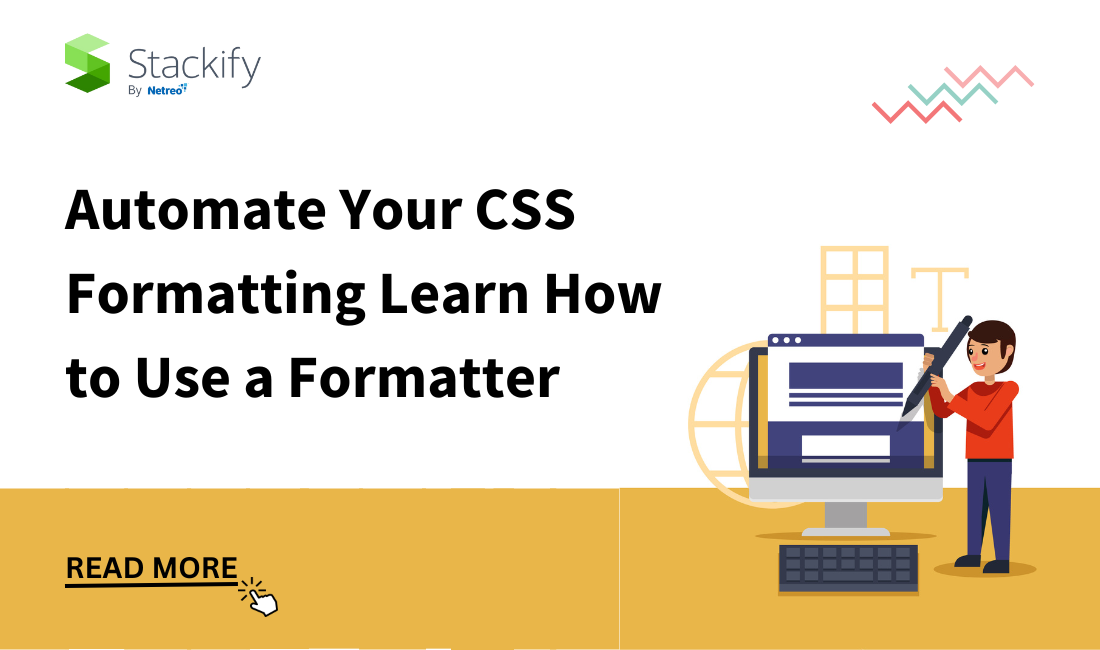
By TechnologyAzure and AWS Monitoring
By IndustryIntegrates with your stack
By InitiativeEngineering & DevOps Teams
TechnicalIt’s easy to get the help you need

As any web developer knows, CSS (Cascading Style Sheets) can be a real pain to deal with. The code is often messy and hard to read, which can make debugging a nightmare. Fortunately, there are tools available that can help automate the process of formatting CSS code. In this blog post, we’ll take a look at how to use a CSS formatter to make your life easier.
A CSS formatter is a tool that makes it easier for web developers to revise code styles. CSS are essentially the rules that make up the visual appearance of websites. Reformatting CSS to customize a website can help developers quickly adjust their design when needed.
Whether you’re building out a new SaaS idea or a personal blog, it’s helpful to use a CSS formatter. It helps you maintain the readability of your code while automatically reorganizing everything into sections. A CSS formatter also indents content in the most logical way, which can become difficult as websites become more complex. Finally, a CSS formatter replaces manual formatting yourself, saving time when making adjustments and enabling you to focus on making sure the code actually works correctly.
There are different types of CSS formatters available, each having its own specific capabilities. One type of CSS formatter is the Compressor, which takes a complex set of commands and reduces it down to just one line of code. Compression reduces the size of your CSS code and makes it more efficient.
According to BrushGalaxy.com, the first step in a clean website design is to kill bloating by removing unnecessary code.
Another type of CSS formatter is the Beautifier. These take compressed sets of commands and make them look more presentable, indenting lines, adding spaces and formatting the code in easier-to-read formats.
Next, there’s a CSS formatter called a Parser, which takes sets of commands, identifies errors and suggests fixes. Some Parsers are also able to recognize certain commands and provide alternative suggestions.
Finally, there are Minifiers. These CSS formatters strip away unnecessary characters and redundant lines of code, plus combine CSS classes into smaller packages. These functions help to reduce the overall size of your code and make it easier to load on a website.
CSS formatters make sure CSS code is compatible with mobile proxies, ensuring websites or applications appear properly on mobile devices. The following guide will show you how to use a CSS formatter and improve the readability of your web pages.
Choosing the best CSS formatter for your project can be a challenge since there are so many options available on the market. With varying complexities, syntax support and other key features, it can be difficult to determine which is the best fit for your needs.
Before deciding on one, researching each individual formatter is key to making an informed decision. Different types of projects require different levels of complexity, so don’t forget this consideration before making a final selection.
Once you have done your research and decided which formatter will work best for you, following a step-by-step guide is essential to minimizing your effort of setting up and operating the chosen software.
The first step in setting up a CSS formatter is to install an appropriate plugin on your text editor. Many popular editors, such as VSCode and Sublime Text, offer different plugins for formatting your code.
Depending on the plugin you choose, it may require additional setup steps such as customizing preferences or adding specific rulesets. Take the time to configure your plugin correctly, so that it formats your code in a way that is easy for you and other developers to read. Once your plugin is installed, you can start formatting your code.
Select a style from the list of available styles to start formatting your code. Different programs offer different options for styling, so make sure to choose one that fits the type of coding you are doing. Once you have chosen a style, simply click “Format” and let the program do its work.
The formatter will go through your code and make sure that all elements are properly formatted, such as placing opening and closing brackets in the right places, indenting lines of code correctly and using consistent spacing. This ensures that your code is easy to read and understand by anyone who may be reviewing it.
The formatter can fix errors that may have been made when writing the code, such as typos or incorrect syntax. Once you are satisfied with the results, simply save your code and it will be ready for use.

Automating CSS formatting has many benefits. Let’s walk through the top reasons why people should seriously consider using a formatter.
One of the top benefits of automating CSS formatting is improved readability. Automated tools allow developers and designers to easily spot errors, typos, inconsistencies and other issues that can affect code readability. By having a consistent visual styling for each class or element, readers can quickly interpret the design intent without needing to reference multiple sources for the same information.
Automated CSS formatting also makes it easier to differentiate between elements, thus improving the overall readability of a website’s codebase. With automated tools, developers can easily keep styling consistent across all pages and make sure that any changes made are correctly applied throughout the project.
Automating CSS formatting is not only more efficient, eliminating the need for manual input and corrections, but it also offers improved code quality.
The standardized format of automated CSS ensures that each new line of code follows a consistent structure and does not introduce any errors or inconsistencies into the codebase. Consistent code is easier to read, debug and maintain.
Automating CSS also helps reduce human errors, as it eliminates manual intervention during the coding process. As a result, developers can quickly identify and fix any issues that arise in the codebase, leading to improved overall code quality.
Automating CSS also helps cut infrastructure monitoring costs by reducing the chances of human errors. Reducing the chance of errors in your web application, its interface or even its infrastructure saves your IT team from running after alerts and triggers.
With the use of Retrace, CSS Formatting can also improve the performance of applications by providing detailed performance metrics and identifying potential issues such as slow loading times, memory leaks, and more. Additionally, Retrace can provide visibility into the end-user experience, allowing for quick identification of issues that could be impacting user experience.
Automating CSS formatting also offers significant time savings for developers. By eliminating the need for manual input, coding becomes much faster and more efficient. Automation helps developers focus their effort on higher-level tasks, like testing and debugging code, rather than spending time reformatting.
This increased productivity results in shorter development cycles, faster turnaround times and more time to focus on other projects. As a result, companies can improve their overall efficiency and reduce costs associated with development. Ultimately, automating CSS formatting increases the speed of web development, while also improving quality.
Whether you are an experienced developer or just trying to get a job as one, automating your CSS formatting is a great way to save time while improving website quality and performance. By using automated tools, web developers can write more maintainable code with fewer errors and gain better control over their websites’ designs without sacrificing speed. Automation also helps keep code clean, organized and consistent across all web pages. For any serious web developer, automating CSS is an essential step to success.
Stackify's APM tools are used by thousands of .NET, Java, PHP, Node.js, Python, & Ruby developers all over the world.
Explore Retrace's product features to learn more.
If you would like to be a guest contributor to the Stackify blog please reach out to stackify@stackify.com